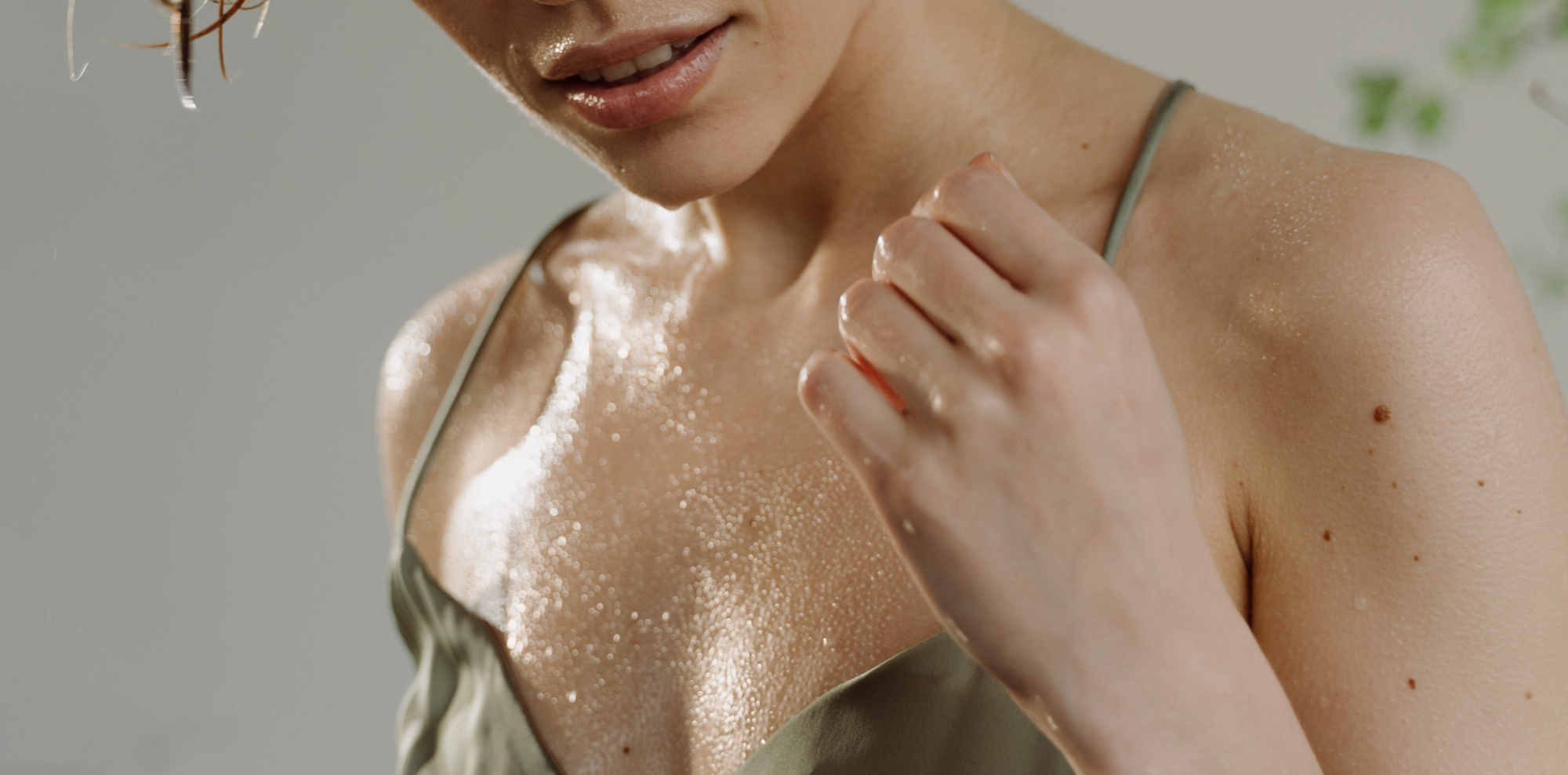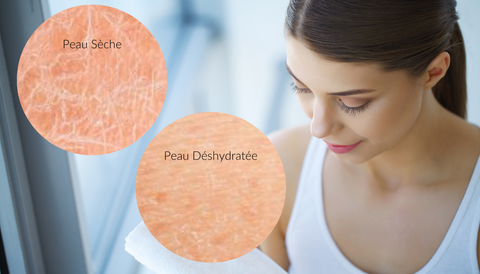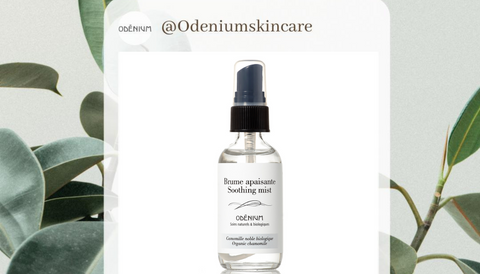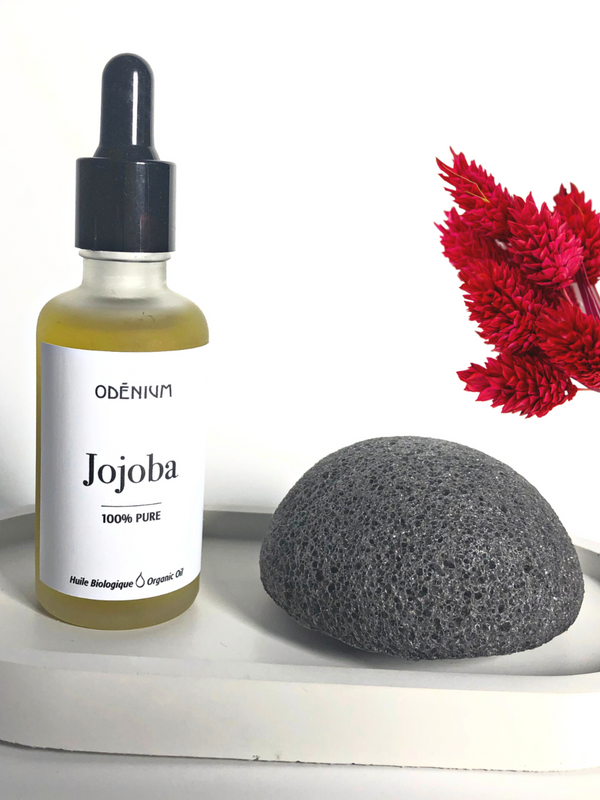DEHYDRATED SKIN: it affects all skin types!

Dehydrated skin is often confused with dry skin. But all skin types (normal, combination, oily and dry) can have dehydrated skin. And it affects women and men equally.
What is dehydrated skin?
How to treat it
Which products to use

THE DIFFERENCES:
- Dehydrated Skin = lack of water = temporary state
- Dry Skin = lack of oil = genetic condition
It can’t be said enough, dehydrated skin is not necessarily dry skin. It’s possible to have combination or oily skin that’s dehydrated.
WHY IS YOUR SKIN MAY BE DEHYDRATED?
The water in the cells of the epidermis (the outer layer of the skin) evaporates much more than you’d think. The reason: the hydrolipidic film that provides a barrier protecting the skin has degenerated. It’s no longer serving its role as a shield and so allows for more water to evaporate. This phenomenon is called transepidermal water loss (TEWL), the natural evaporation of water in your skin.
DEHYDRATED SKIN: HOW IT LOOKS AND FEELS
Dehydrated skin can feel uncomfortable, especially after cleansing or a shower. Tightness, tingling, a dull complexion and a lack of suppleness are the first signs of dehydration.
You won’t necessarily have patches of dryness or flaking unless you have dry dehydrated skin!
Dehydration lines are obvious signs. Gently push upward at top of your cheeks with your finger tip. If fine parallel lines appear around your fingertip, you have dehydration lines.

CAUSES
A number of factors can cause the dehydration of your skin (especially a deteriorated hydrolipidic film):
• Environmental factors (cold, wind, sun, pollution, heat and air conditioning, etc.);
• Lifestyle factors (alcohol and tobacco consumption, insufficient intake of water, stress, fatigue, etc.);
• Certain medications (acne treatment, cholesterol-lowering medicine, for examples); and
• The use of inappropriate skincare products or irritants (for example: if you don’t moisturize your skin because it’s oily or if you use products that are too astringent or harsh).

TREATMENTS
Moisturization of your skin actually works by stopping water from evaporating and not by allowing it in.
Do these two things to rehydrate your skin:
- Hydrate your body: moisturize your skin from the inside by drinking plenty of water.
Your skin cells are nourished by water you drink that then circulates throughout your body via the blood stream, reaching both the dermis and the stratum corneum.
Water is distributed throughout the cutaneous layers, from the deeper ones to the more superficial until it reaches your skin’s surface and evaporates. To avoid dehydration, it’s important to limit this evaporation.
- Preserve the hydrolipidic film of your skin; it’s the outermost barrier of your skin. As long as it’s intact, it will limit water loss and keep your skin supple and well moisturized.
It’s important to note that drinking water is the only way to hydrate your skin. Moisturizing cream is really a misnomer; think of serums and anti-dehydration creams.

RECOMMENDATIONS:
- First: increase the water content of your skin to make up for ‘excess’ water loss from evaporation. Drink at least 8 glasses of water per day. Eat plenty of water-containing fruits and vegetables like cucumbers, bell peppers, lettuce, citrus fruits and apples and limit the consumption of foods that are dehydrating like sodas, coffee, alcohol, salt and packaged foods.
- Second: add a humectant to your skincare routine for immediate comfort (like vegetable glycerine, aloe vera gel or hyaluronic acid).
- Third: "hydrate" with plant serums to restore the hydrolipidic film and thus limit the evaporation of water from the epidermis. Use serums that contain argan, borage, macadamia, sea buckthorn, avocado, apricot, hemp, evening primrose and jojoba as well as balms containing shea, mango and cocoa butters.
It’s this third recommendation that will help you rehydrate your skin. Protecting the hydrolipidic film of your skin will help ensure you have lasting comfort and beautiful, supple skin.
MOISTURIZING CREAMS
These creams are composed of approximately 80% water. They provide temporary relief due to their high water content but don’t contain enough lipids (vegetable-, not petroleum-derived) to preserve the hydrolipidic film of your skin. As a result, the water on the surface of your skin quickly evaporates and the feeling of discomfort returns. A vicious circle of endless comfort/discomfort then sets in because the hydrolipidic film itself has not been treated.

SKINCARE ROUTINE
- Gently cleanse your face using cleansing oils like jojoba oil or a gentle cleanser like Hypnos that’s gentle on your skin.
Contrary to popular belief, cleansing with oil is suitable for all skin types, even oily, combination and acne-prone skin. Oil has the advantage of not damaging the hydrolipidic film of the skin. The composition of jojoba oil is very close to the composition of the skin's natural sebum! Perfect for removing impurities and make-up.
- Boost hydration with floral mists enriched with a humectant of your choice.
There are many natural humectants such as vegetable glycerin, aloe vera and hyaluronic acid that you can add to your skincare routine.

You can choose ready-to-use treatments (being mindful of their ingredients) or add the humectant yourself to your treatments.
Our soothing mists are enriched with organic vegetable glycerin.
Vegetable glycerin is added to our mists up to a maximum of 2 to 5%, anything more will cause the opposite effect.
Apply Aloe vera gel or hyaluronic acid in very small quantities between the mist and the “hydrating” serum or mix it with the latter. For oily skin or skin with imperfections, use it every night. For normal or dry skin, use it 2 to 3 times a week. Vegetable glycerin is gentler and best for sensitive skin.
Use caution when using products with hyaluronic acid, High-molecular-weight hyaluronic acid helps retain moisture on the surface of your skin, instantly softening and smoothing, while low-molecular-weight hyaluronic acid penetrates deeply, acting at the cellular level to stimulate the production of collagen, plumping your skin. And remember to protect your skin from the sun with sunscreen.
Click on the image to get to Serums
- “Hydrate” your skin with serums full of active ingredients formulated for your skin type. Don’t use a formula for dry skin unless you have dry skin.
Rich in Omegas 6, 7 and 9, as well as saturated fatty acids, these serums will help restore and strengthen the hydrolipidic film of your skin.
This last step is crucial if you want to rehydrate your skin.
CONCLUSION
Well-hydrated skin must be:
- Deeply hydrated, right down to the level of the dermis. This skin level is not impacted by the use of cosmetic products but by good oral hydration (drink plenty of water!).
- Hydrated on the surface, at the level of the epidermis and especially the stratum corneum.






Comments
0 Comments
Leave a Comment